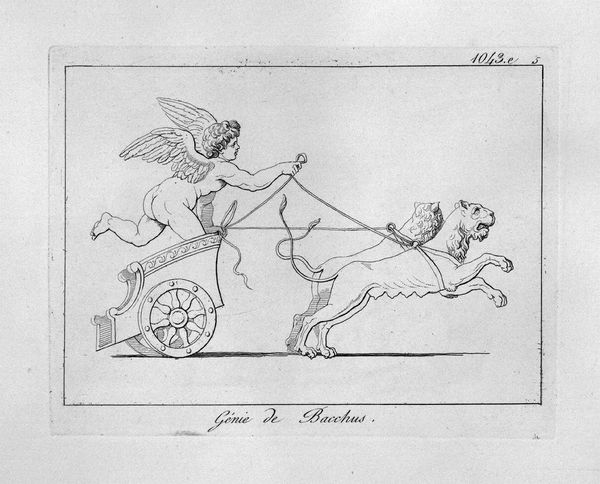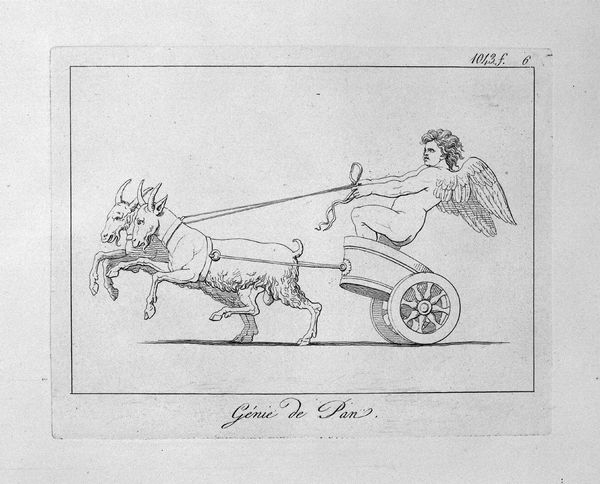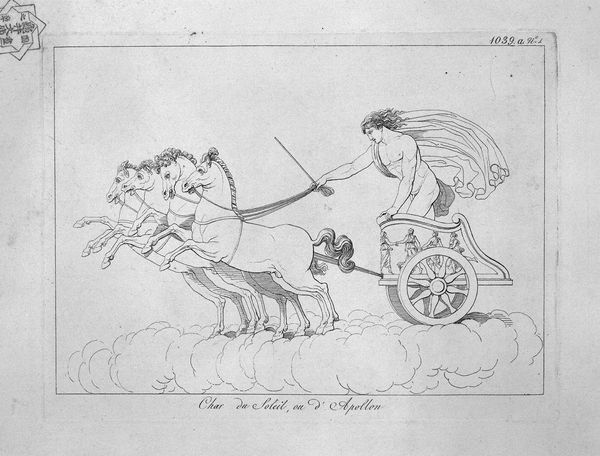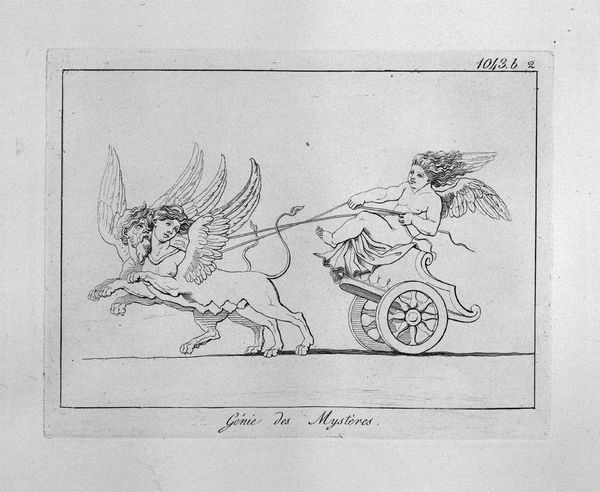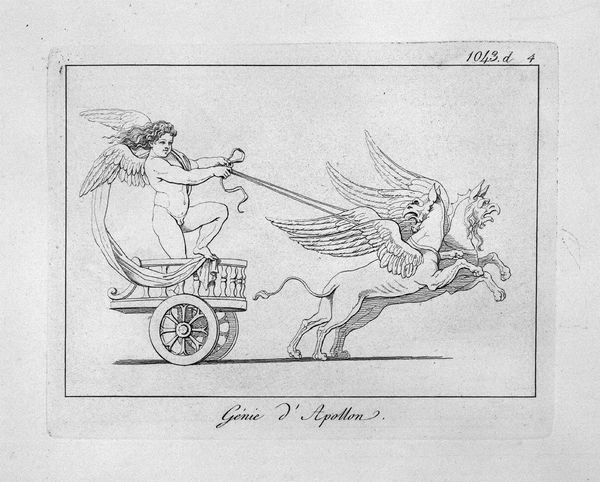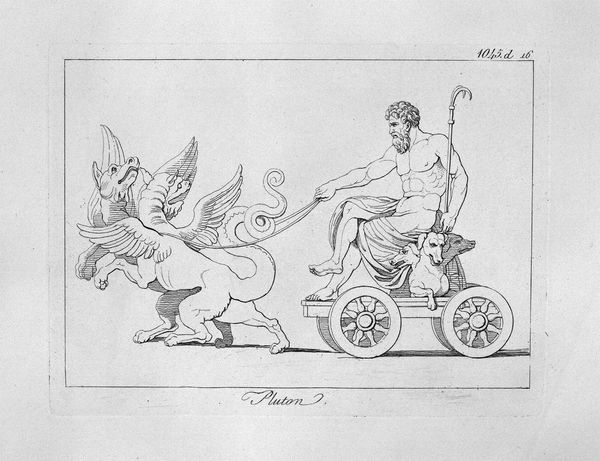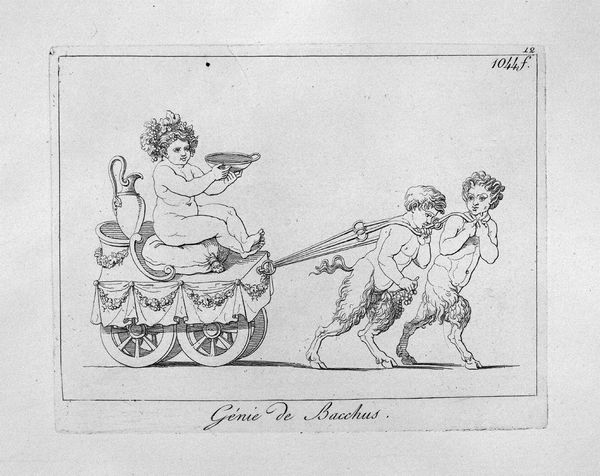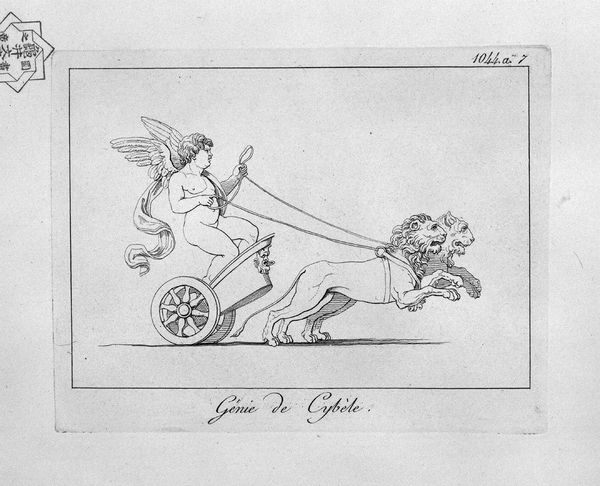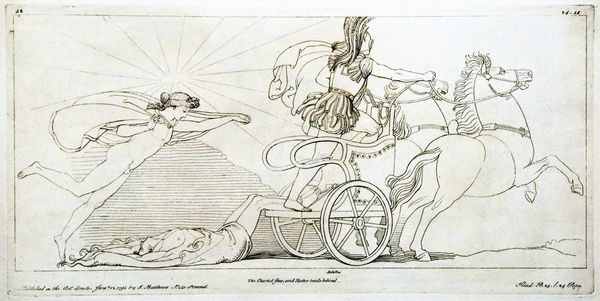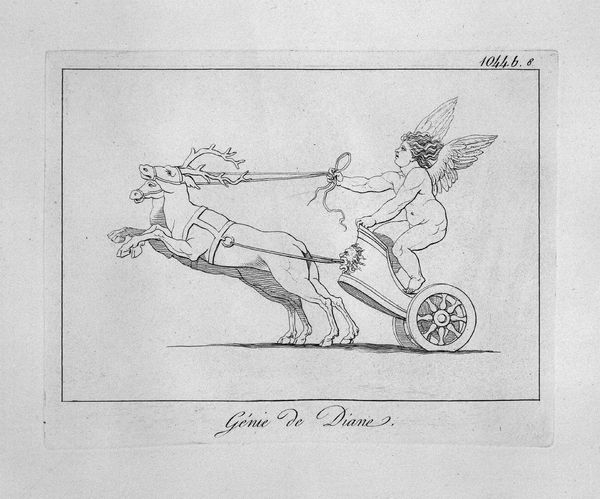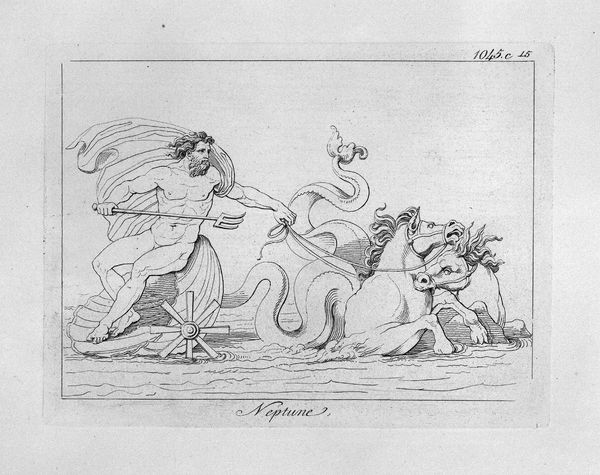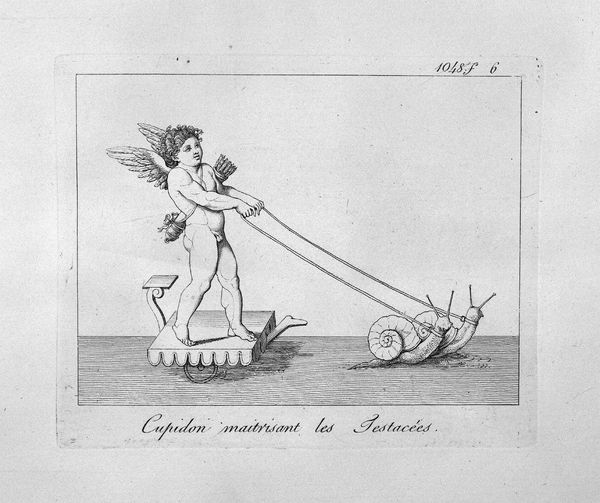
engraving
#
allegory
#
greek-and-roman-art
#
figuration
#
roman-mythology
#
mythology
#
line
#
engraving
Copyright: Public domain
Curator: The engraving you’re now viewing is entitled "Genius of Mars". The print is by Giovanni Battista Piranesi. Editor: It strikes me immediately as very linear. A sharp, stark sort of presentation; neoclassical, of course, in its precision, but with something playful. It feels almost…unfinished. Curator: Perhaps that airiness is deliberate. As an allegorical representation of Mars' spirit, rather than the god himself, the scene lacks some of the weight one might expect. Mars' association with both war and agriculture in Roman culture indicates prosperity—abundance that springs seemingly from nowhere. It reminds me of how Renaissance and Baroque thinkers associated the planet Mars with energy, creativity, and strong emotions. Editor: I notice how much the horses dominate. They seem full of vigor and power, their lines straining as though poised at the precipice of action. A curious choice given we're talking about the spirit of Mars, usually connoting military prowess. The focus is primarily on harnessing raw force—the untamed steeds over the chariot, its simple wheeled carriage. Curator: Exactly! And note the Cupid driving that carriage— Eros-like. A symbol here, I believe, of a much deeper narrative within Roman mythological themes. This isn't about violent conflict, but about controlled release. The energy is bound by Cupid; thus, by Love, as opposed to the outright destruction associated with Ares. The cultural memory linked with the imagery is one of order and control of primal instincts, rather than celebrating martial power alone. Editor: An interesting point. To me, those thin, controlled lines reinforce restraint visually, giving the subject an austere edge over a dramatic flourish. The composition certainly favors clarity—each element distinct and legible. Its formality emphasizes intellectual command, a design far from chaos or visceral impact. Curator: Well, Piranesi was deeply influenced by history, not only aesthetically but ideologically. He explored not just the power of Rome, but also what underlay and continues to underlie that idea. He’s asking how power and passion find balance and express themselves through culture over time. Editor: Indeed. Through an examination of Piranesi's construction, as well as considering Cupid and horses as metaphors, my perception of this work has subtly shifted to an understanding of restrained potential. Thank you.
Comments
No comments
Be the first to comment and join the conversation on the ultimate creative platform.
